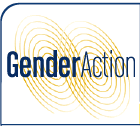Gender Action's Essential Gender Analysis Checklist
The following checklist can be used to assess the quality of gender integration in International Finance Institution (IFI) investments, and provides a gender analysis framework for civil society, government and other entities' projects. This qualitative checklist reveals the extent to which gender-related issues are addressed. Outputs could be in short narrative form, including examples to describe the extent to which an organization or project:
-
1. approaches gender issues from a human rights perspective (gender and human rights);
-
2. acknowledges and seeks to redress inequalities between men and women, boys and girls; explicitly promotes equality between men and women, boys and girls (gender in/equality);
-
3. provides and analyzes gender disaggregated data as part of the background/justification for the project’s existence and design; includes gender disaggregated indicators for project monitoring purposes (including data on gender participation in planning, implementation and M&E (gender data);
-
4. analyzes gender relations, dynamics and inequalities within relevant political, legal, geographic, economic, historical and/or social contexts to be considered throughout the project cycle (gender in context);
-
5. examines how gender inequalities uniquely affect men and women/boys’ and girls’ abilities to participate in the project cycle and benefit from project outputs and outcomes, including whether user fees and other harmful conditions promoted through the project may differentially affect access to services for men and women, boys and girls (gender access);
-
6. identifies and seeks to value men’s and women’s differential unpaid time devoted to traditionally feminine care work, including cooking, cleaning, child care, and water and fuel collection (gender and care work);
-
7. promotes the equal opportunity for those who are directly or indirectly affected by the project to participate through- out the project cycle—from planning to implementation to monitoring and evaluation—including women, marginalized men, and other vulnerable groups, as appropriate; collect data on participation by gender (see “Gender Data”; gender inputs);
-
8. plans project outputs and outcomes that accommodate and respond to the differential needs of men and women, boys and girls (gender outputs);
-
9. Considers the differential longer-term impacts of projects and/or IFI-endorsed policies on women and men, boys and girls (gender impact).
Available in PDF here.
|
